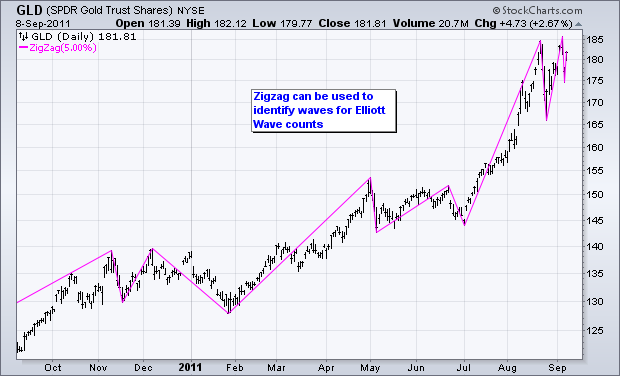|
|
The Zigzag indicator is not really an indicator per se. Instead, it defines price swings that meet a minimum percentage change. Chartists can use this indicator to identify significant price swings and filter out insignificant price swings. The definition of significant is, of course, subjective.
A Zigzag set at 10% would only shows swings that were at least 10%. Price swings less than 10% would be ignored. The example below shows a 15-minute chart for the Gold SPDR (GLD) with the 10% Zigzag overlaid. There have been three 10% swings in the last two months. Chartists should ignore that last Zigzag line. It simply connects the last peak or trough with the current close. It may or may not be a 10% swing.

Click this image for a live chart.
The Zigzag can also help with Elliott Wave counts. The chart below shows the Gold SPDR (GLD) with a 5% Zigzag using daily bars. Elliotticians could count only the pink zigzag waves and ignore price action that does not fit the Zigzag. Note that the Zigzag on a bar or candle chart uses intraday highs and lows. The Zigzag on a close-only line chart uses closing prices only. The Zigzag on a close-only chart will look different and have fewer zigzags.

Click this image for a live chart.


